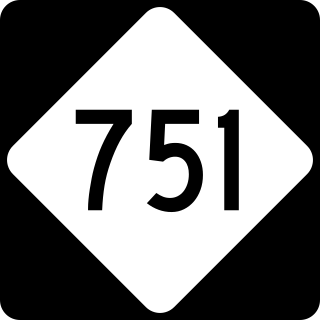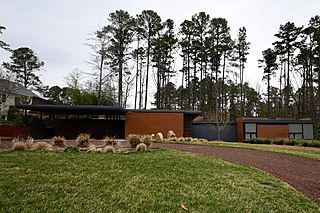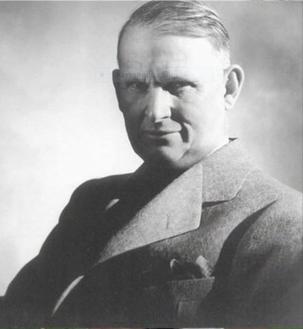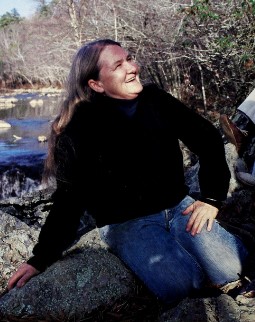
Mebane is a city located mostly in Alamance County, North Carolina, United States, and partly in Orange County. The town was named for Alexander Mebane, an American Revolutionary War general and member of the U.S. Congress. It was incorporated as "Mebanesville" in 1881, and in 1883 the name was changed to "Mebane". It was incorporated as a city in 1987. The population as of the 2020 census was 17,768. Mebane is one of the fastest-growing municipalities in North Carolina. Mebane straddles the Research Triangle and Piedmont Triad Regions of North Carolina. The bulk of the city is in Alamance County, which comprises the Burlington Metropolitan Statistical Area, itself a component of the Greensboro-Winston-Salem-High Point Combined Statistical Area. Two slivers in the eastern portion of the city are in Orange County, which is part of the Durham-Chapel Hill Metropolitan Statistical Area, itself a component of the Raleigh-Durham-Chapel Hill Combined Statistical Area.

Pinehurst Resort is a golf resort in Pinehurst, North Carolina in the United States. It has hosted a number of prestigious golf tournaments including three U.S. Open Championships, one U.S. Women's Open, three U.S. Amateur Championships, one PGA Championship, and the Ryder Cup.

Donald James Ross was a professional golfer and golf course designer. Ross was born and raised in Scotland but moved to the United States as young man. Ross designed dozens of courses across North America and is generally regarded as one of the top golf course designers of all time.
Aronimink Golf Club is a private country club in the eastern United States, located in Newtown Square, Pennsylvania, a suburb west of Philadelphia. Its championship layout is consistently rated among the nation's top golf courses. Aronimink is currently ranked 78th in Golf Digest's "Greatest Courses," 44th in "Toughest Courses" and 55th in Golfweek's "Classic Courses." In 2010, Aronimink was ranked #4 among the toughest courses on the PGA Tour by Links magazine.

Aymar Embury II was an American architect. He is best known for commissions from the City of New York from the 1930s through to the 1950s. In this period, Embury frequently worked with Robert Moses in the latter's various city and state capacities, especially, early on, in Moses’ capacity as New York City Parks Commissioner. Many surviving examples of Embury's work are zoos, swimming pools, playgrounds, and other recreational structures in New York City parks.

North Carolina Highway 751 (NC 751) is a north–south state road in North Carolina that runs from U.S. Route 64 (US 64) near Jordan Lake State Recreation Area, to US 70 Business near Durham. The road also continues south approximately 4.3 miles (6.9 km) to US 1 as New Hill-Olive Chapel Road (SR 1141). It runs largely parallel to NC 55, extending farther west towards Hillsborough which can be reached by continuing on US 70.
Minneapolis Golf Club is a golf club located in St. Louis Park, Minnesota, a suburb of Minneapolis, Minnesota. Designed by Willie Park, Jr. and Donald Ross, the Minneapolis golf course opened in 1916. The club hosted the U.S. Amateur in 1950 as well as the PGA Championship in 1959, which Bob Rosburg won.
John Sprunt Hill was a North Carolina lawyer, banker and philanthropist who played a fundamental role in the civic and social development of Durham, North Carolina, the expansion of the University of North Carolina at Chapel Hill and the development of rural credit unions in North Carolina during the first half of the 20th century.

Wiley and Elizabeth Forbus House is a historic home located at Durham, Durham County, North Carolina. It was built between 1931 and 1933, and is a two-story, Norman Provincial style brick dwelling. It consists of a central hip-roofed block flanked by side gabled wings. It features a two-story tower with conical roof on the main block.

John C. and Binford Carr House is a historic home located in the Hope Valley Historic District of Durham, North Carolina. It was built in 1958, and is a one-story, "T"-shaped brick, steel, and glass Modern Movement style dwelling with a flat roof. It originally had 2,337 square feet and employs a Japanese aesthetic with a courtyard plan, a copper door with a simple copper appliqué design, and two sets of Shoji rice paper doors.

Perry Duke Maxwell was an American golf course architect. He was a founding member of the American Society of Golf Course Architects and was an inductee into the Oklahoma Sports Hall of Fame in 2012. He was known as the "father of Oklahoma golf".
Eugene Perry Hamm Jr. was an American professional golfer and golf course designer.

Longview Gardens Historic District is a historic post-World War II neighborhood and national historic district located 1+1⁄2 miles east of downtown Raleigh, North Carolina. The district encompasses 189 contributing buildings and five contributing sites. Notable contributing resources include the Raleigh Country Club golf course designed by Donald Ross, Longview Baptist Church and Milner Memorial Presbyterian Church (1946), both striking examples of Modernist architecture.

Walltown is a historically African-American neighborhood in Durham, North Carolina. The neighborhood is located between West Durham Historic District and Trinity Historic District, north of Duke University East Campus. Historically, the neighborhood was a working class neighborhood for African-American employees of Duke University and local tobacco and textile mills in Durham. Walltown was named after George Wall, a former enslaved person, who was one of the first people to purchase a lot in the area. Members of the community were active in the civil rights movement and desegregation in Durham. Since the beginning of the twenty-first century, Walltown has been undergoing gentrification.

The Douglas M. and Grace Knight House, also known as Knight House, is a Modernist-style mansion in Durham, North Carolina. The house, designed by Alden B. Dow, previously served as the official residence for presidents of Duke University and is now used by the university as an event space, conference facility, and guest house. On April 6, 1968, four-hundred and fifty university students marched to the house during the Silent Vigil at Duke University. The house, previously called University House, was officially named after Douglas Knight and Grace Nicholas Knight in 2003.
Wilhelmena Katherine Fuller "Mena" Webb was an American writer and editor. She taught writing classes at the University of North Carolina at Chapel Hill's Evening College, was a columnist and society editor at The Herald-Sun, a novelist, and the author of a biography on the industrialist Julian Carr.

Margaret Nygard was a British-American environmentalist and conservationist. Born in British India to a civil servant, she was educated in both India and Britain. During the 1940 and 1941 bombing campaign against Britain, her school was relocated to British Columbia, Canada. Nygard studied English at the University of British Columbia and after her graduation in 1944 briefly became a teacher at the university. She went on to earn a master's degree and a PhD from the University of California, Berkeley. In 1962, she and her family moved to Durham, North Carolina, and became aware of environmental threats to the Eno River. She founded the Eno River Association in 1965, becoming its first president. She naturalised as a United States citizen in 1993.














